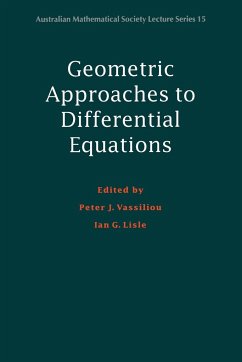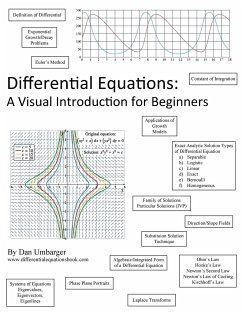
Differential Equations
Their Solution Using Symmetries
Herausgeber: MacCallum, Malcolm A.
Versandkostenfrei!
Versandfertig in 1-2 Wochen
57,99 €
inkl. MwSt.

PAYBACK Punkte
29 °P sammeln!
This book provides an introduction to the theory and application of the solution of differential equations using symmetries, a technique of great value in mathematics and the physical sciences. In many branches of physics, mathematics, and engineering, solving a problem means a set of ordinary or partial differential equations. Nearly all methods of constructing closed form solutions rely on symmetries. The theory and application of such methods have therefore attracted increasing attention in the last two decades. In this text the emphasis is on how to find and use the symmetries in different...
This book provides an introduction to the theory and application of the solution of differential equations using symmetries, a technique of great value in mathematics and the physical sciences. In many branches of physics, mathematics, and engineering, solving a problem means a set of ordinary or partial differential equations. Nearly all methods of constructing closed form solutions rely on symmetries. The theory and application of such methods have therefore attracted increasing attention in the last two decades. In this text the emphasis is on how to find and use the symmetries in different cases. Many examples are discussed, and the book includes more than 100 exercises. This book will form an introduction accessible to beginning graduate students in physics, applied mathematics, and engineering. Advanced graduate students and researchers in these disciplines will find the book an invaluable reference.














